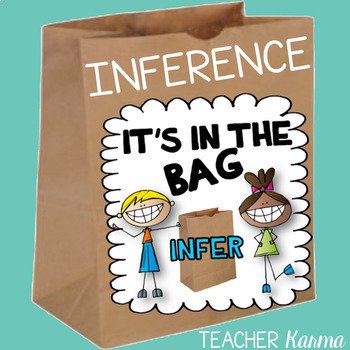Inference Activity and Hands on Reading Comprehension, INFER: It's in the BAG
- PDF
What educators are saying
Description
INFER: What's in the BAG will help your students make inferences! This inference activity is a hands-on reading comprehension resource designed for students to practice their inferring skills while having FUN simultaneously! These interactive lessons are perfect for getting families involved in learning.
The Inferring resource also makes a great RTI or intervention activity. Using this reading comprehension resource in your classroom will provide your students with meaningful practice in the following areas:
- Use inference strategies to gather information
- Ask questions and think independently
- Think beyond literal comprehension
- Implement, practice and use inferring and metacognition strategies
- Improve overall comprehension skills
- Orally present information and ask questions
This resource can be used with any grade level and easily adjusted to the level of differentiation needed in the classroom or homeschool.
You will find EVERYTHING you need to make this FUN and useful classroom activity a huge success in your classroom. Included in this 24-page kit:
- Bag label in color & black and white
- Possible Questions poster / anchor chart
- Letter to family (overview and individual assignment)
- Student checklist
- Teacher's list used for organizing and keeping track the assignment
- Handouts: THINK SHEETS (#1, INFER, Questions, Q & A, and Wonderings)
Below are additional COMPREHENSION and METACOGNITION lessons, strategies, and assessments:
Metacognition Reading Partners - BRAIN BUDDIES!
Metacognition 1 Real Reading Salad Kit
Inference Lessons and Organizers for Comprehension
Customer Tips:
How to get TPT credit to use on future purchases:
- Please go to your My Purchases page (you may need to login). Beside each purchase you'll see a Provide Feedback button. Simply click it and you will be taken to a page where you can give a quick rating and leave a short comment for the product. I value your feedback greatly as it helps me determine which products are most valuable for your classroom so I can create more for you. ☺
Be the first to know about my new discounts, freebies and product launches:
- Look for the red star near the top of any page within my store and click it to become a follower. You will now receive customized email updates about this store. ☺
Thank you for visiting Teacher Karma. If you have any questions or concerns about a product, please message me.
For additional learning strategies, please visit my educational blog,
Best wishes!
Jen Bradshaw





